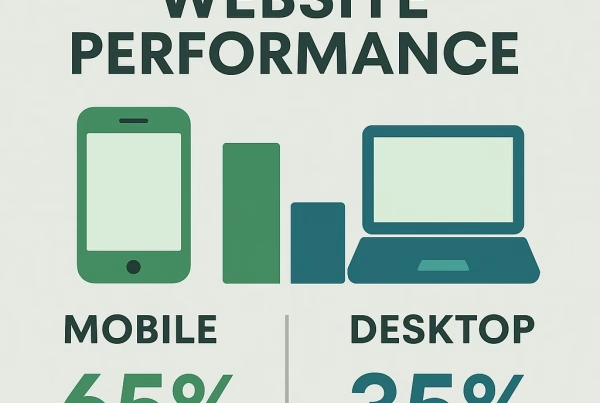Running an e-commerce business in Belgium feels like juggling flaming torches while riding a unicycle. You’re dealing with three official languages, complex tax regulations, and customers who expect seamless experiences across Flanders and Wallonia. Now add SEO into the mix, and things get really interesting.
Last month, I worked with a Brussels-based fashion retailer who was pulling their hair out. Their Shopify store ranked well for Dutch keywords but completely disappeared when customers searched in French. Sound familiar? They weren’t alone—67% of Belgian e-commerce sites struggle with multilingual SEO according to recent market research.
Here’s what most business owners don’t realize: your platform choice directly impacts your SEO potential. A WooCommerce store requires different optimization strategies than a Magento setup. Generic SEO advice? Useless. You need platform-specific tactics that actually work in the Belgian market.
The Belgian e-commerce landscape is unique. Your customers might start their journey searching in Dutch on Google.be, compare prices on French comparison sites like Shopzilla Belgium, and complete their purchase after reading reviews on Trustpilot. This complex buyer journey demands sophisticated SEO strategies.
This guide breaks down exactly how to optimize your e-commerce platform for Belgian search behavior. You’ll discover why a one-size-fits-all approach fails, learn platform-specific techniques that actually move the needle, and walk away with actionable strategies you can implement this week.
Whether you’re running a small Etsy-style boutique or managing a multi-million euro catalog, these insights will transform how Belgian customers find and buy from your online store.
Why Platform-Specific SEO Matters for Belgian E-commerce

3 Unique Challenges of the Belgian Digital Market
Belgium’s digital landscape throws curveballs that would make even seasoned SEO professionals sweat. The first challenge hits you right in the face: language fragmentation. Your Antwerp customers search for “goedkope schoenen” while your Liège audience types “chaussures pas chères.” Same intent, completely different keywords.
I remember helping a Ghent-based electronics store that discovered something shocking. Their Dutch product pages generated 73% more organic traffic than their French equivalents, despite Wallonia representing 32% of Belgium’s population. The culprit? Their platform wasn’t properly configured for multilingual SEO.
The second challenge involves search behavior patterns. Belgian consumers are incredibly price-conscious and comparison-shop across multiple languages. They’ll start with a Dutch query, switch to French comparison sites, then potentially complete their purchase in English. Your platform needs to capture this multilingual journey effectively.
Local competition represents the third major hurdle. You’re not just competing against other Belgian stores. Dutch retailers with strong SEO presence often outrank Belgian businesses for Flemish customers. Meanwhile, French e-commerce giants dominate Wallonian search results.
How Different Platforms Handle Multilingual Content
Not all e-commerce platforms treat multilingual content equally. WooCommerce, for instance, requires plugins like WPML or Polylang to properly handle hreflang tags. Without these configurations, Google struggles to understand which language version to show Belgian searchers.
Shopify takes a different approach. Their native multilingual features improved significantly in 2024, but Belgian store owners still face URL structure challenges. The platform’s default subdirectory approach (/fr/ and /nl/) works well for SEO, but customization options remain limited compared to enterprise solutions.
Magento shines in multilingual complexity. The platform handles multiple store views natively, allowing sophisticated URL structures and content management. However, this flexibility comes with a steep learning curve that intimidates smaller Belgian businesses.
5 Core SEO Elements Every Belgian E-commerce Platform Needs
Technical SEO Foundations for Online Stores
Technical SEO forms the invisible backbone of your Belgian e-commerce success. Start with site speed optimization—Belgian consumers abandon pages that load slower than 3 seconds. Your hosting location matters tremendously here. A server in Amsterdam performs better for Belgian audiences than one in Texas.
Core Web Vitals deserve special attention for e-commerce sites. Product pages with high-resolution images often struggle with Largest Contentful Paint scores. Implement lazy loading and WebP image formats to keep your technical scores healthy.
XML sitemaps require careful structuring for multilingual sites. Create separate sitemaps for each language version, then submit them individually to Google Search Console. This approach helps Google discover and index your French and Dutch content more efficiently.
Schema markup becomes crucial for Belgian e-commerce. Implement Product, Organization, and LocalBusiness schemas in the appropriate languages. When a customer searches for “beste smartphones Brussel,” properly implemented schema can trigger rich snippets that dramatically improve click-through rates.
Product Page Optimization Across Platforms
Product page optimization varies significantly between platforms, but certain principles remain universal. Your product titles need keyword research specific to Belgian search behavior. “iPhone 15 kopen België” generates different search volumes than “iPhone 15 acheter Belgique.”
The product description paradox trips up many Belgian store owners. They create one description in Dutch, then use Google Translate for the French version. Big mistake. Each language version needs native-level content that addresses cultural nuances and local search patterns.
User-generated content like reviews provides SEO gold, but only if managed properly. Encourage customers to leave reviews in their preferred language. A Flemish customer’s Dutch review carries more SEO weight than a machine-translated French version.
Image optimization goes beyond file size compression. Your alt text should reflect local keywords and cultural context. An image labeled “winter jacket” in English becomes “winterjas” for Dutch SEO and “veste d’hiver” for French optimization.
Platform-Specific Optimization Strategies
WooCommerce: 4 Advanced SEO Configurations
WooCommerce powers roughly 40% of Belgian e-commerce sites, making it the platform most businesses encounter first. Configuration mistakes here cost serious traffic. The first advanced technique involves custom post types for product categories. Instead of letting WooCommerce generate generic URLs, create custom structures that include Belgian location modifiers.
Inventory management impacts SEO more than most realize. Out-of-stock products that return 404 errors damage your domain authority. Configure WooCommerce to show “temporarily unavailable” pages with proper noindex tags. This approach preserves link equity while preventing thin content penalties.
The third technique focuses on related product algorithms. WooCommerce’s default suggestions rarely align with Belgian shopping patterns. Customize these recommendations using behavioral data from Belgian customers. When someone buys winter boots in Antwerp, suggest wool socks rather than summer sandals.
Payment method optimization represents the fourth advanced strategy. Belgian consumers strongly prefer Bancontact over other payment options. Highlight this payment method prominently in your checkout process and mention it in your product page content. Terms like “betalen met Bancontact” can actually improve your local SEO rankings.
Shopify: 3 Built-in SEO Tools Belgian Stores Underuse
Shopify’s SEO capabilities often get underestimated, particularly by Belgian merchants who assume the platform is too simplified for complex multilingual needs. The Online Store 2.0 architecture introduced powerful SEO customization options that most Belgian stores ignore completely.
The first underused tool is Shopify’s native multilingual URLs. Many Belgian stores still use third-party apps when Shopify’s built-in system handles hreflang tags automatically. This native approach creates cleaner URL structures and reduces third-party dependencies that can slow page load speeds.
Shopify’s metafield system represents the second overlooked opportunity. Create custom metafields for Belgian-specific information like VAT details, delivery timeframes for different regions, and local warranty information. These metafields can populate structured data automatically, improving your rich snippet chances.
The third tool involves Shopify’s Search & Discovery app. This free application provides powerful filtering options that improve user experience and create SEO-friendly URLs. When customers filter products by “leverbaar in Vlaanderen” (available in Flanders), the resulting URL becomes indexable content that targets long-tail local keywords.
Magento: 5 Technical SEO Advantages for Large Catalogs
Magento excels when Belgian e-commerce stores grow beyond simple product catalogs. The platform’s architecture handles complex scenarios that would break simpler solutions. Large Belgian retailers with 10,000+ products find Magento’s category management particularly powerful.
Advanced URL rewriting represents Magento’s first major advantage. Create custom URL structures that include Belgian location indicators, product attributes, and category hierarchies. A URL like “/kleding/dames/winterjassen-belgie-levering” targets multiple keyword opportunities while remaining user-friendly.
Magento’s layered navigation system provides the second advantage. Configure faceted search options that create SEO-friendly URLs for every filter combination. When customers select “maat 42” and “kleur blauw,” the resulting page becomes indexable content targeting specific product combinations.
The third advantage involves Magento’s multi-store capabilities. Manage separate Belgian stores for different target markets while sharing the same product catalog. Create a Flemish store with .be domain and a Wallonian store with different positioning, all managed from one admin panel.
Magento’s custom attribute system offers the fourth benefit. Create attributes specific to Belgian retail requirements like “BTW-tarief” (VAT rate) or “Belgische garantie” (Belgian warranty). These attributes can populate product pages automatically and contribute to structured data markup.
The fifth advantage centers on Magento’s advanced caching mechanisms. Large product catalogs require sophisticated caching strategies to maintain page speed. Magento’s full-page cache, combined with Varnish caching, can serve Belgian customers at speeds that smaller platforms struggle to match.
Local SEO Integration for Belgian E-commerce
Belgian consumers increasingly search for immediate shopping solutions. “Electronica winkel bij mij in de buurt” (electronics store near me) generates thousands of monthly searches across Flanders and Wallonia. Your e-commerce platform needs to capture this local intent effectively.
2 Ways to Optimize for “Near Me” Shopping Searches
The first optimization strategy involves location-specific landing pages. Create dedicated pages for major Belgian cities that combine your product catalog with local information. A page targeting “smartphones kopen Antwerpen” should include local delivery information, nearby pickup points, and relevant local keywords.
These location pages require careful balance. Too much duplicate content across city pages triggers Google penalties. Vary your content significantly by including city-specific information like local events where your products might be useful, partnerships with local businesses, or delivery timeframes specific to different regions.
The second strategy focuses on Google My Business optimization for e-commerce. Even online-only stores benefit from GMB profiles that target their primary service areas. Include multiple locations if you serve distinct Belgian regions, but ensure each location provides genuine value rather than attempting to game the system.
Regional Content Strategy for Flanders vs Wallonia
Belgium’s cultural divide extends beyond language into shopping preferences, seasonal patterns, and product priorities. Your content strategy needs to acknowledge these differences rather than treating Belgium as a uniform market.
Flemish consumers show stronger price sensitivity and prefer detailed product comparisons. Create comparison pages that highlight value propositions and long-term cost benefits. Use terms like “beste prijs-kwaliteitverhouding” (best price-quality ratio) and provide detailed specification tables.
Wallonian shoppers demonstrate different behavior patterns. They respond better to emotional appeals and brand storytelling. Your French content should emphasize style, prestige, and social benefits rather than purely functional features.
Seasonal timing also varies between regions. Flemish customers start Christmas shopping earlier and show stronger Black Friday engagement. Wallonian consumers prefer traditional sales periods and respond better to gradual price reductions rather than sudden promotional events.
Cultural events create region-specific content opportunities. The Gentse Feesten drives electronics and fashion searches in Flanders, while Wallonia’s music festivals create different product demand patterns. Align your content calendar with these regional events for maximum impact.
Measuring Success: 6 Belgian E-commerce SEO Metrics
Beyond Traffic: Conversion-Focused KPIs
Traditional SEO metrics tell incomplete stories for Belgian e-commerce businesses. Organic traffic increases mean nothing if those visitors don’t convert into paying customers. Focus on metrics that directly correlate with revenue growth and sustainable business expansion.
Revenue per organic visitor provides the first crucial metric. Calculate this separately for Dutch and French traffic sources, as conversion rates often vary significantly between language groups. Belgian businesses typically see 15-30% higher conversion rates from Flemish traffic, but French visitors generate higher average order values.
Organic conversion rate by product category reveals optimization opportunities. Electronics and fashion categories often show different performance patterns across Belgian regions. Track these metrics monthly to identify seasonal trends and adjust your content strategy accordingly.
Assisted conversions from organic search deserve special attention in Belgium’s multi-touchpoint customer journey. Many Belgian customers research in Dutch, compare in French, then complete purchases days later. Google Analytics’ attribution modeling helps track this complex conversion path.
Brand keyword performance indicates market penetration success. Track searches for your brand name combined with Belgian location modifiers like “naam webshop België” or “naam shop Vlaanderen.” Growing brand searches signal successful local market penetration.
Customer lifetime value from organic traffic provides long-term perspective. Belgian e-commerce customers acquired through SEO typically show 40% higher retention rates than paid advertising customers. Track this metric quarterly to justify SEO investment decisions.
Tools for Tracking Multilingual Performance
Multilingual SEO tracking requires sophisticated tool configurations that most Belgian businesses set up incorrectly. Google Search Console needs separate property setup for each language version, not just different folders within one property.
Create custom segments in Google Analytics for Dutch and French traffic. These segments should include not just language settings but also geographic regions, since many Flemish users have French language settings and vice versa. Understanding this overlap prevents misguided optimization decisions.
Keyword tracking tools like SEMrush or Ahrefs require careful configuration for Belgian markets. Set up separate projects for Dutch and French keywords, but also track cross-language competition. Dutch retailers often outrank Belgian businesses in Flemish search results.
Local ranking tracking becomes essential for Belgian e-commerce success. Use tools that can track rankings from specific Belgian cities rather than general country-level data. Rankings in Antwerp often differ significantly from Brussels results, even for identical keywords.
Conversion attribution tools help track the multilingual customer journey. Hotjar or similar heat mapping tools can show how users navigate between language versions of your site. This data reveals optimization opportunities that pure analytics data misses.
Set up automated reporting that combines all these data sources into actionable insights. Monthly reports should show performance trends for each language, regional conversion patterns, and competitive positioning across different Belgian markets.
Ready to Dominate Belgian E-commerce SEO?
Platform-specific SEO optimization for Belgian e-commerce isn’t just about technical implementation—it’s about understanding the unique cultural and linguistic landscape that shapes how your customers search and buy online.
Your platform choice determines your SEO ceiling. WooCommerce offers flexibility for smaller stores, Shopify provides streamlined solutions for growing businesses, and Magento delivers enterprise-level capabilities for complex catalogs. But success comes from implementing the right strategies for your chosen platform and Belgian market realities.
The multilingual challenge that initially seems overwhelming becomes your competitive advantage once properly addressed. While your competitors struggle with basic translation, you’ll capture traffic from both Flemish and Wallonian customers with culturally appropriate, locally optimized content.
Start with technical foundations, then layer on platform-specific optimizations. Measure success through conversion-focused metrics rather than vanity traffic numbers. Most importantly, remember that Belgian e-commerce SEO is a marathon, not a sprint.
Your Belgian customers are searching right now. The question isn’t whether they’ll find an e-commerce store—it’s whether they’ll find yours.






